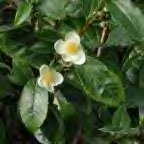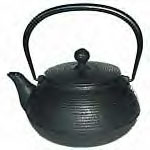|
Tea
by CloŽ (Nov 28, 2005) |
|
| Tea is an infusion of dried leaves of the tea tree, after fermentation for black tea, without fermentation for green tea. It can be drunk hot or cold (iced tea). Tea originated in China where the plant (Camelia sinensis) comes from and has been known since 200 BC. European countries discovered this delicate beverage during the 17th century. Tea is the most spread drink in the world. In fact, it has adapted to the different people who adopted it.
Under the Tang dynasty (618-907) tea was not drunk alone, it was mixed with soup, for example. Thanks to the poet Lu Yu tea will be actually appreciated for its taste. It is under the influence of Lu Yu and the poets of the Tang period that the Chinese art will know a noticeable development. To facilitate its transport, tea is now in the shape of 'bricks'. A brick of tea leaves is prepared by crushing young leaves before grinding them to get paste which is then compressed in a mould. This brick was broken into pieces, which were put in river water previously boiled in baked clay bottles. |
The way to make tea was totally changed during the Ming dynasty (1368-1644). The baked clay bottle disappeared to make room for the kettle. Tea is not beaten or boiled anymore. It is infused in a teapot or directly in cups with a china lid. Instead of swallowing it, they take time to taste it using gold or silver teaspoons.
It was not until the 17th century and the beginning of overseas journeys that Europe discovered tea. It was in the middle of the 17th century that the Chinese beverage was known in England. The consumption was multiplied by 15 between 1700 and 1800. The English first drank Chinese tea before discovering the tea of their main colony : India.
Nowadays the consumption of tea is slumping in Great Britain whereas the sales have doubled in 10 years in France ! Tea is now considered as a healthy drink without calories, and used in cookery. |
|
If you wish to react to this article, write to the editor. |
|



